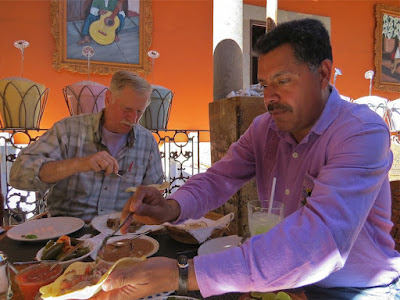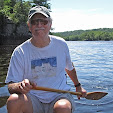The first time I went to Costa Rica, my wife and I had signed on with a St. Paul travel company specializing in small, custom-made experiences in that amazing country.
The format differed a bit from the few “tours” we’d been on with other travel programs; we jumped from one group of fellow travelers to another, depending on where we were and how long we’d be there. But for most of our ten-day journey we were the charges of one tour guide: Jimmy.
IN THE BLOOD
Jimmy was friendly, helpful and well-versed in not only the varied flora and fauna of each of Costa Rica’s twelve distinct climate zones, but in his native country’s geography, geology, history, politics and social fabric. He was also charming and, at least in part because of his diminutive stature, lovable.
It’s certainly not very “adult” of me—I suppose you could call it a weakness—but I have a way of becoming ridiculously attached to people who guide and teach me. It’s a little like a kid’s adoration of a favorite camp counselor. And, sure enough, though he was young enough to be my son, I grew quite attached to Jimmy in that way.
I liked him not just because he knew so much about his country, but also simply because he was Costa Rican. I wanted to be more than his student, or even his friend; I wanted to be Costa Rican.
I stood in front of Jimmy for what
seemed like a full minute searching
for the words I’d memorized.
THE LANGUAGE OF BEST INTENTIONS
 Among his other gifts to me, Jimmy was kind and generous enough to help me a bit with my nascent Spanish. (I’ve always felt that learning at least a bit of a destination’s language and culture is essential to being fully present there.) So, as the end of our week together approached, it only made sense that I say my good-byes and express my thanks to Jimmy in his native tongue.
Among his other gifts to me, Jimmy was kind and generous enough to help me a bit with my nascent Spanish. (I’ve always felt that learning at least a bit of a destination’s language and culture is essential to being fully present there.) So, as the end of our week together approached, it only made sense that I say my good-byes and express my thanks to Jimmy in his native tongue.I crafted what I thought would be a manageable couple of sentences; I looked up the necessary vocabulary and grammar; and I practiced—on the bus, at night before bed, even in the shower—what I felt would be a perfect, accent-free little recitation.
I thought I was ready, but when the moment came, things were hectic. We all had buses to catch; other group members were lined up to thank and tip Jimmy; and the poor guy had all he could do to give everyone a few seconds to say adios and still manage his other responsibilities.
As our turn approached, I got stage fright. I stood in front of Jimmy for what seemed like a full minute searching for the words I’d memorized. After all that work, all those best intentions, I think all I managed was Muchas gracias, Jimmy.
It just seems a little like ordering
the catch of the day, but expecting
it not to taste “fishy.”
TWO KINDS OF TRAVELERS
I’ve regretted that awkward moment ever since—in fact, it has been one of my most powerful motivators in becoming a nearly-fluent Spanish speaker.
And there have been other such moments as I’ve traveled the world—other guides, teachers, folks who’ve welcomed me into their homes and families. I nearly always shed tears when I part company with new friends with whom I’ve shared a profound experience, and so it is when I bond with a place; I weep every year when Sally’s and my annual month in Zihuatanejo, Guerrero, Mexico comes to an end.
Why do I—and perhaps you—become so attached to the people and places we’re privileged to visit? I suggest there are basically two kinds of travelers. The first are those who go places shielded in a shell of familiarity; the other, those whose main goal is to break out of that shell.
Now I have nothing against the Cancuns or the Ocho Rioses of the world—those tourist enclaves where folks can go and spend a week or two with no surprises and all the comforts of home. Or those all-inclusive resorts designed to keep one even more contained, safeguarded from the locals and their ways of life.
But those experiences are not for me. It just seems a little like ordering the catch of the day, but expecting it not to taste “fishy.” Sure, spending your precious vacation time in that shell may ward off some unpleasant surprises, but it also deflects wonderful, potentially transformative ones.
GREEN AROUND THE GILLS
For the past decade or so I’ve had a nearly insatiable appetite for travel in Latin America. This is due, in part, to my yearning for fluency in Spanish. But there’s more to it than that. I am coming to realize that, in a previous life, I was actually a Mexican fisherman. Though my rational side reminds me that I’m not prepared for the realities of that life, my romantic side says, why not?
I’d be close to the sea—that is, once I conquered my extreme susceptibility to seasickness. I’d have all those colorful, celebratory traditions, that amazing closeness of family that so many Latin Americans enjoy. I’d dance as if no one were watching. I’d be able to sit around a card table with my buddies drinking mescal and jabbering away in the kind of Spanish even quasi-hispanohablantes like me can barely decipher.
Yes, I know I can never be that Mexican fisherman—nor Jimmy’s compañero. But I can dream, can’t I?
Which type of traveler are you?



























































